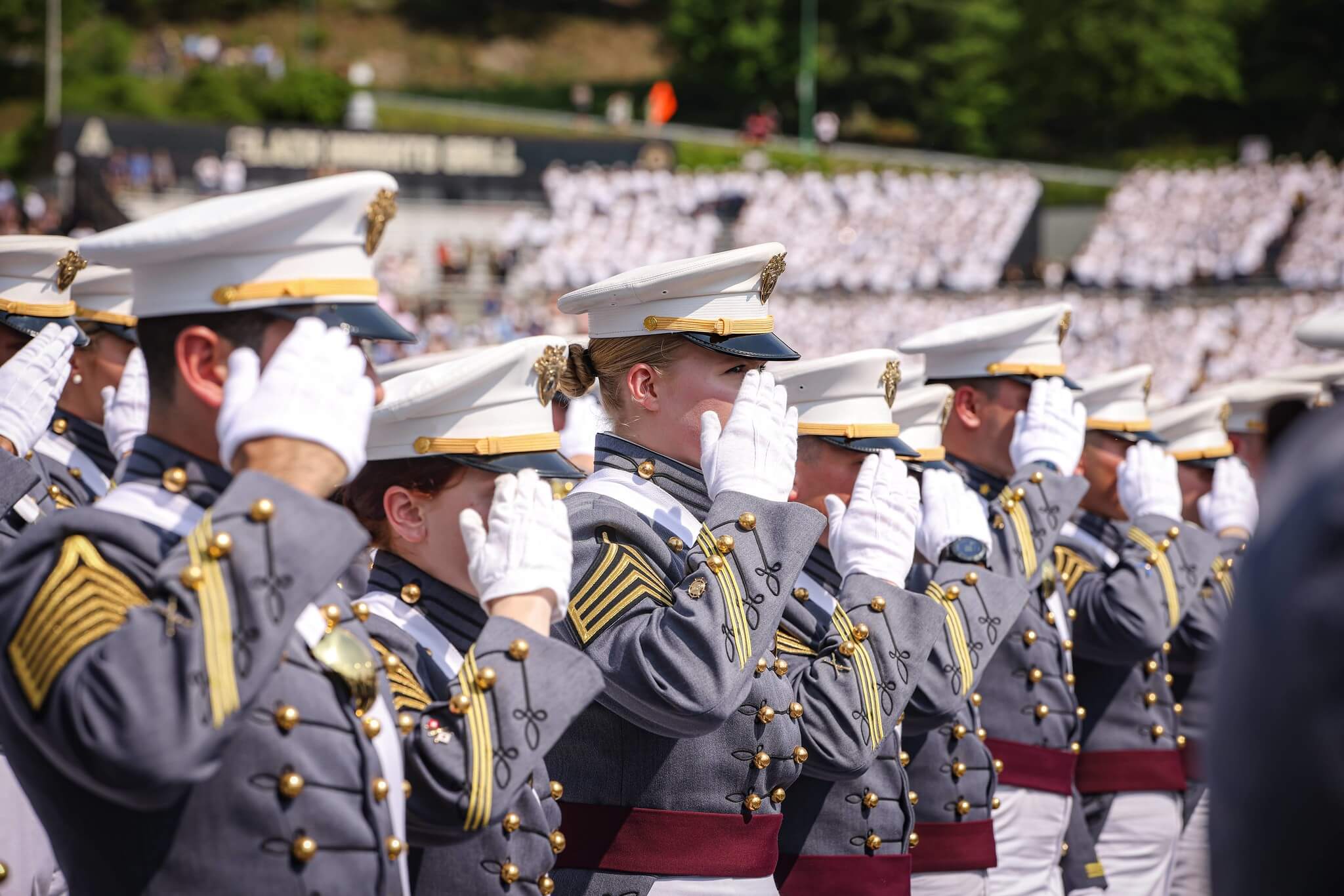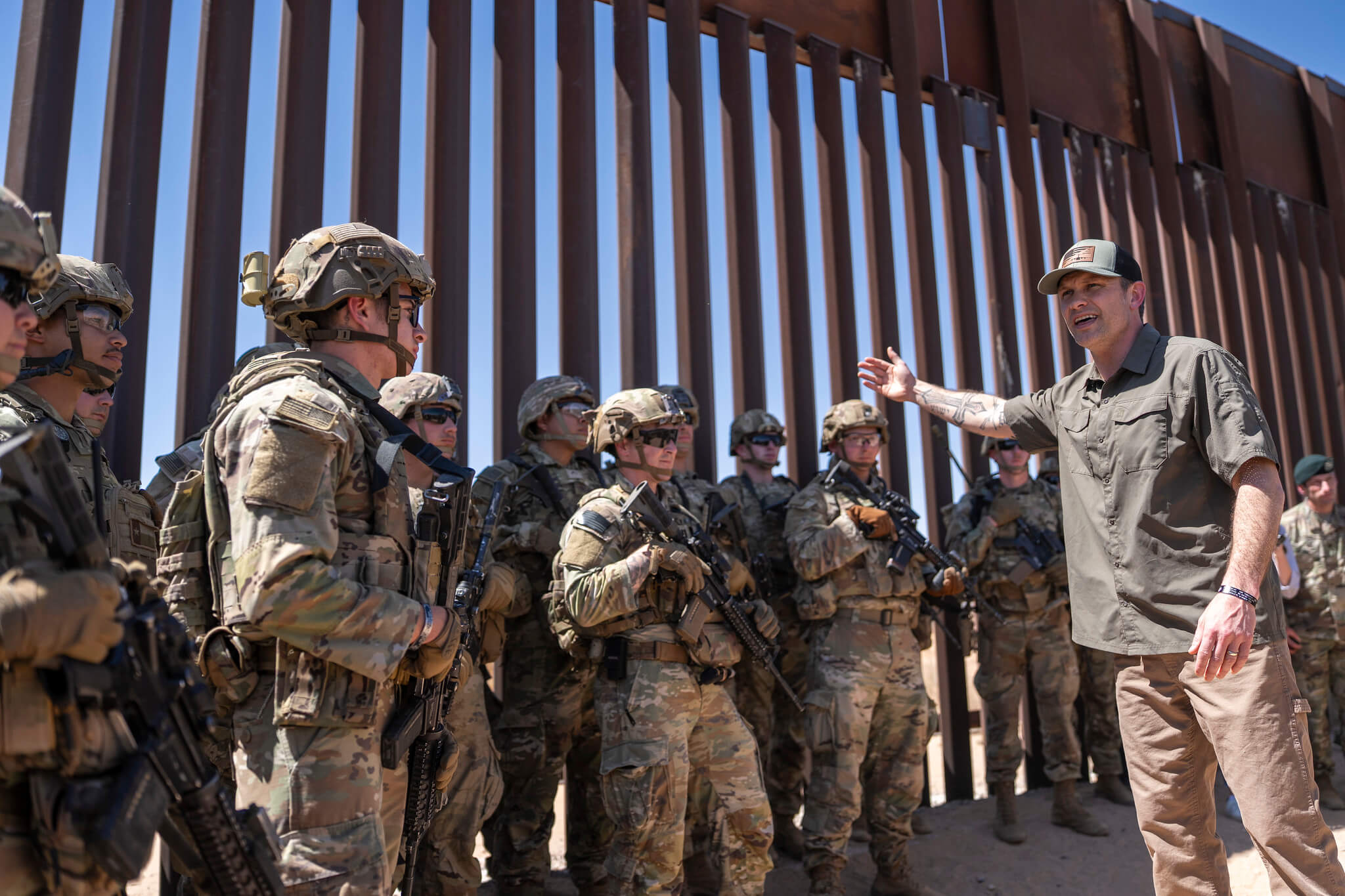Lawfare Daily: The Golden Dome Missile Defense Program

Published by The Lawfare Institute
in Cooperation With

For today's episode, Lawfare Foreign Policy Editor Daniel Byman interviewed Tom Karako, the Director of the Missile Defense Program at CSIS, to discuss the Trump administration's missile defense proposals known as "Golden Dome." Karako explains the purpose of Golden Dome, its feasibility and cost, the likely reactions of China and Russia, and what realistic success would look like.
To receive ad-free podcasts, become a Lawfare Material Supporter at www.patreon.com/lawfare. You can also support Lawfare by making a one-time donation at https://givebutter.com/
Click the button below to view a transcript of this podcast. Please note that the transcript was auto-generated and may contain errors.
Transcript
[Intro]
Tom Karako: You are not gonna be able to protect those airfields indefinitely, but you may be able to do it long enough so that, so that China has an increased doubt that they aren't going to pay a very heavy price for, for, for doing that sort of an attack.
Dan Byman: It's the Lawfare Podcast. I'm Daniel Byman, the foreign policy editor of Lawfare. And I'm here today with Tom Karako, who is the director of the Missile Defense Project at CSIS.
Tom Karako: You've seen the, the Russian kind of proliferation of cruise and hypersonic and yes, undersea, you know, megaton delivery devices. It, it, it's going to be wicked hard to get everything. And that's why I think it is far more stabilizing than destabilizing when you, when you, when you put pen to paper and you think it through.
Dan Byman: Today we're talking about the Trump administration's “Golden Dome” missile defense programs.
[Main podcast]
So we're gonna talk today about the changes, or possible changes, in U.S. missile defense. And I want you to start really by educating us. On Jan. 27, President Trump issued an executive order entitled an Iron Dome for America. It's since come to be called the “Golden Dome” effort. And for those of us who are outside the missile defense community, can you give us a description of what “Golden Dome” is, why it's happening now, the cost and purpose, and just make us smart, please.
Tom Karako: Well look I think fundamentally as it, as it kind of said at the outset of the Jan. 27 executive order, this is driven by a particular problem set, a particular threat set, and that is the, the very considerable proliferation and expansion of missile threat capabilities globally. This—what was once, you know, perhaps seen as a boutique threat has very much now become weapons of choice. And we've seen this in spades in the Ukraine conflict over the past three years, and likewise, we've seen it in the number of, of very sophisticated air missile attacks on Israel for instance over the past couple of years.
And you’ve also seen a, I would say, stepping out and a demonstration of the technical prowess of active air, air missile defense. You know, Ukraine has put the Patriot Air Defense system on its currency because of the significance of it to kind of preserving Ukraine sovereignty to date. Air missile defense is not gonna win a conflict for you by itself, but its absence will lose one for you pretty quick in this environment.
We can just imagine what would've happened in terms of, for instance, Israel's response on April 14 of last year, when hundreds and hundreds of things were coming in simultaneously. If it had not been for the engagement of so many hundreds of those things, both in the air and with missile defense, it would almost have certainly meant a massive response by Israel to, to Iran.
And so the order kind of recognizes that very significant missile threat and says, hey, we, we gotta do something about this, especially for the homeland. And it's very much attentive to the U.S. homeland, especially but not only CONUS in the United States, as opposed to say, force protection abroad things like that. And so that's, I I think the, the fundamental impulse here.
You know, the title “Iron Dome for America” plays off—of, of the executive order—it plays off the, what is perhaps the best publicly, you know, popularly known missile defense system, the lowest layer of Israel's multilayered defense. But it's, it's definitely emphatically not about the Iron Dome product made by Rafael.
It is going to be about very different threat set and a very different set of capabilities. Some of those things we're gonna kind of draw on what's already in existence today, and yes, it's also going to be about new, new, new capabilities, new domain basing, things like that.
But it'll, it'll be a mix and it's gonna have to be a mix, because, just in the same way that Israel has a multi-layered system, there is a multiplicity of threats: UAVs, cruise missiles, ballistic missiles, various things, hypersonic gliders and the like. And all of those are, they're threats that are here, they have arrived. And those are things we have to be contended with to provide some degree of protection for the American people, for critical infrastructure, and the like.
And so that's kind of the, the, the problem set that it's to deal with. It is a very wicked, hard problem, and this is not to say that, that the Golden Dome effort aspires to catch everything, but rather to have, as I said, a degree of protection for certain things against, I would say, this full spectrum of threats.
Dan Byman: When we talk about these systems, my impression is the, the cost can vary considerably depending on what you're trying to achieve. Can you talk us through what some of the estimates are, both for the near term, but also as we think of this as, you know, five years out, ten years out, what this might end up costing?
Tom Karako: Yeah. Well, I think it is important to emphasize that, you know, every weapon system in DOD is limited, every one of them, and missile defense will be a limited scarce asset as well. It's not going to be unlimited—I think that's something that somehow gets in the conversation in the water and, and needs to be disabused.
The, the threat is very robust. And so I think that's the beginning of wisdom is, is the recognition that you can't defend everything, especially in terms of non-ballistic maneuvering threats. You can't defend everything. You have to, you have to pick and choose in terms ,terms of what is your, your defended asset list.
So that's sort of the beginning of wisdom, and so therefore, it's hard to cost or throw out numbers, because we don't yet know what the architecture is exactly. We don't yet know how many threats are going to be baked in, in terms of, okay, we're gonna defend against a hundred cruise missiles or 500 cruise missiles. So in other words, it's hard to cost what it is when we don't yet have an it, and a scale for it.
Now, don't worry, the CSIS Missile Defense Project will be costing the bejesus out of this once we, we get the architecture and some numbers, but what I would say, based on various atmospherics and things for instance, in, in Congress and, and otherwise, I would not be terribly surprised if you're looking at perhaps a $10 billion a year increase.
And I, I'll tell you, we, we've put out various studies including one on, for instance, homeland cruise missile defense, and we built an architecture, we costed it conservatively, and it was, it was a couple billion dollars a year of funding to be able to provide cruise and air missile defense for, I think it was five areas of the country.
And so an extra $10 billion, I would say is, is gonna go fast, even if you are constrained and conservative in terms of what you're trying to defend and against how many things you're trying to defend. Again, the threat gets a vote; it has arrived in spades in terms of air and missile capability.
You’re also almost certainly going to see—because it was there in the executive order—more space sensors, which is critically, critically important for tracking, especially hypersonic gliders and the like. And yes, you're probably gonna see a significant research and development effort on the space-based interceptor front. We’re recording on April 4; there was a, a request for information, an RFI, that dropped today for an industry day on space-based interceptors specifically that will be held at the end at the end of the month, April 30. So that's coming. It's coming because it was directed in the executive order. Space-based interceptors is useful if you, if you can do it to kill especially ballistic missiles in their boost phase, but it's hard.
All of this missile defense is, is hard. As I like to say, we have demonstrated positively and definitively that you can hit a bullet with a bullet; in fact, we can hit a bullet in a very specific place with another bullet. The precision guidance of hit to kill has come so far and again, demonstrated in real life with every single missile defense system of ourselves and the Israelis has been used successfully in combat over the past five years, and actually just over the past two years, THAAD, Patriot, you name it, Aegis has been used successfully against especially Iranian missiles for instance. And also Russia of course in Ukraine. So, you're gonna see some of the, more of the same, but you're also gonna see, I predict a lot of new stuff.
Dan Byman: So, and let, let's talk a little bit more about the threat. I at least was surprised in some ways by the effectiveness of missile defense against what Iran threw at Israel, and also impressed by what's been happening with Ukraine when they, when, at least when the systems have been in place.
That said, China's a different adversary and it has impressive capabilities. It has lots of systems and it’s gonna get better. So could you describe how China might use hypersonics, cruise missiles, ballistic missiles in an all-out conflict, and what some of the problems would be for the United States in these circumstances.?
Tom Karako: Oh, that's absolutely right. And I'll tell you, Dan, I, I was also surprised. I, I say it was, it was probably nothing short of a miracle that, so very few of the 600 or so projectiles that were fired at Israel last April 14—nothing short of a miracle that that more didn't get, didn't get through. And then again, on October, I think it was October 1 of last year when they sent like a hundred plus ballistic missiles alone. That's, that's pretty stressing.
But you're right. As I like to say, China on a bad day will be sending to Guam or to, to various other places—military bases, Okinawa ports and airfields and, and CONUS—they're gonna be sending an order of magnitude more than that. And so that's why, again, recognizing that you can't do everything, you can't defend everything, that's why I think the protection of military forces is gonna be so important.
The “Golden Dome” effort is, is apparently more on the counter value protection, but it is also said to be a capabilities based approach, which means you develop the capabilities and then you can adjust your Defended Asset List, your DAL, you can adjust that as as needed.
And so, yes, the, the, the Chinese would throw a lot in terms of numbers, but significantly, just as on April 14 of last year, it was a complex and structured and integrated attack, which is to say complex in the sense of having multiple different types of things, and structured or integrated so that they arrive simultaneously or in some other way that stresses the radars, it stresses the defender in various ways. And so you can bet that China would structure an attack on, let's just say, Guam, to be as, as difficult as possible.
Now, the other thing to recognize is when people talk about the cost exchange ratio and they talk about real costs—they also talk about inventory or magazine depth—it’s also really important to remember that, as I said at the outset, it is limited. And the purpose of missile defense is not to sit and play catch. It's not, it's, it's not simply to defend. It is rather to defend long enough to answer or end the threat by other means.
And that's why as we do these cost exchange ratios, offense versus defense, it's a very stilted impartial approach to it. Just as we think about air power and ground, land power within the broader joint force as part of a larger thing, you have to do the same here as well. And so, air and missile defense, its job is to defend long enough to bring your diplomatic, military, economic, various other tools in the, in the broad national toolbox to bear.
And especially, you know—and let's just say that back to the Guam example—you may defend long enough to get your bombers off the ground or long enough to get your ships out of port. You're not gonna be able to protect those airfields indefinitely, but you may be able to do it long enough so that, so that China has an increased doubt that they aren't going to pay a very heavy price for, for, for doing that sort of an attack.
And so by it's the offense defense integration or it's the combination within the broader force—that, that's how you gotta approach. And that is how it contributes to deterrence, but also to our broad defense goals.
Dan Byman: So you, you've talked us through the capability question; you've talked us through the exchange ratio cost, exchange ratio question.
Lemme give you a third, I'll say, a common criticism that I've heard. And this, you know, frankly goes back to—listeners can guess my age by, by this type of question—but if you go back to the kind of late Cold War period. There was a criticism of the U.S. nuclear buildup or other methods that at times, things like the Strategic Defense Initiative, saying basically in response the Soviets will simply increase their arsenals, and in the end we'll have both spent a lot of money and the situation will not be any safer for the United States, and in fact it'll probably be less stabilized.
Is that a fair criticism here where all we're doing is really incentivizing China to get a lot bigger arsenal?
Tom Karako: Well, I think China's doing a really good job of building up their missile forces and their destroyers and all this other stuff already.
Look, strategic stability is a thing. It can be defined in many different ways. I think it's important that we not have simply the, the carryover, the, the, the intellectual baggage of the past, and we, we approach the situation today as, as it presents itself, not kind of with the recollections of what we thought or thought we thought about the Soviets from years gone by.
And so what I would say is—I haven't been doing this a while as well—that the conversation on missile defense, I, I would say has, has changed and changed dramatically in the past three years. And I think this, the Ukraine conflict has emphatically altered the perceptions of, of missile defense, and it's done so in a couple ways.
One, it wasn't so very long ago when people would say, you know, it's just impossible. Russian missiles are just too good. It's gonna be impossible for us to be able to, to intercept these. And what we've seen with Patriots and NASAMS and other systems in the Ukraine conflict is actually they're shooting down Russian kit and they're doing not a bad job of it.
Do we have enough interceptors? Of course not, again, to sit there indefinitely. That's why in the Ukraine case, they need to win the war by other means while air defense buys them time and protects their sovereignty in the near term.
The other thing that has changed dramatically in the past three years is, you know, I used to debate folks in Europe and here in the U.S. on, is missile defense provocative and destabilizing? I haven't heard any of that hardly at all in the past three years because again, it has, it has proven to be a stabilizing force.
Now I think it's critical to, to distinguish here between the big nuclear thing and the especially non-nuclear strategic attack, which is really what we've seen over the past couple years. It is the abundance, it is the, the supply of lots and lots of precision guide capability, more and more missiles and more, more sophisticated missiles that has lowered the threshold for use and has again, made these, these weapons of choice.
And so what we've seen is that active air and missile defense contributes to stability providing what I call speed bumps in the sky that was slowing down, but what might otherwise be a, a fait accompli kind of, kind of a thing. And so that's, that I think is a, a nuance, and I think a really important one in terms of how we think, think about this.
Nevertheless, there is this, this this idea, this, this, this worry, let's just say, that if the United States had its Death Star and was capable of, of taking out every Chinese or, or Russian ICBM, that would be destabilizing because that would, would lead the, the Russians and the Chinese to worry that we would strike first and, and be able to, to sop up anything that they, they put up in return.
Putting aside the fact that the United States is not going to do that—and I think they, they know that—putting that aside, first of all, I think you, you have to be even more of a faith-based believer in missile defense than I am to have that much confidence in it or to play that kind of a, a game of risk, just assuming that that missile defense will be perfect. Again, back to April 14, I think it was a miracle that it caught as many as it did. This is not something you would be sanguine about or take lightly.
So I think that the Russia proliferation of cruise and hypersonic and yes, undersea, you know, megaton delivery devices—it, it's going to be wicked hard to get everything. And that's why I think it is far more stabilizing than destabilizing when you, when you, when you put pen to paper and you think it through. And so it's, it's, the threat is really, really hard and you shouldn't take it lightly that we could take of everything that our adversaries could throw at us.
Dan Byman: Let me just ask a specific question on China. Would China develop something similar and, you know, does it have the technical capability? Is it something that China's talking about right now?
Tom Karako: Yeah, that's a good question. In fact, the Chinese are. Go take a look at the, the latest report on the military power of the People's Republic of China from late last year, and you'll see a description there of the several families of air and missile defense systems that they're pursuing to include mid-course ballistic defense.
Of course, the Russians have had forms of missile defense for some time. And they, they talk about in that, in that PRC mil-power report of their kind of S-300 and S-400—those are Russian systems—classes of capability. And then there's the, the Chinese HQ versions of those. But they also talk about not just ASAP but explicitly midcourse ballistic missile defense tests and capability development.
So, so again, I think it is important to demystify and de-exotify this capability. It's something that is in high demand for ourselves, for Russia and China, for our, for our allies and partners. You're, you're seeing a massive demand signal in Europe with the Germany-led European Sky Shield Initiative. Everybody wants air defense. Everybody wants missile defense 'cause that's where the threat is. That's, that's, it's, it's not a boutique thing; it's central thing to how folks fight wars now.
And you saw in the Turkey acquisition of the Russian S-400 Missile Defense Air, Air Missile Defense System, kind of a perfect storm. You know, one of our NATO allies going and buying the, the Russian kit, we canceled their involvement in F-35 for, for good reasons as a result of that because we didn't want them flying their F-35 in front of the Russian radars and the Russian radars figuring out how to get the F-35, for instance.
So, it's, it's, it's a, a massive surge as I like to say in the, in the supply of various long range strike missile threats, but it's also a surge in the supply and demand globally of active air and missile defenses to contend with them that you're seeing among ourselves, our adversaries and our allies.
Dan Byman: Let me switch gears given that this is Lawfare, and ask you to kind of take us through some of the legal implications. What types of international agreements or legal restrictions might be implicated by some of the Golden Dome systems?
Tom Karako: Yeah. So again, we, we don't know yet what the Golden Dome is per se, but the good news is on this front that the answer is probably very, very few, if any. You know, there's sometimes the idea that the Outer Space Treaty of 1967, for instance, would preclude space-based interceptors. Well, no, that's, it doesn't. What it precludes is putting nuclear weapons in space. You know, if the Russians go ahead with putting some kind of a nuclear device in low earth orbit, that would be a violation. But, but these sort of things, hit to kill or various non-nuclear intercept means, would not be would not be an issue per se.
I tell you as somebody who did my dissertation on treaty law and executive agreements, there's a very rich and extensive legal history of the ABM treaty crisis. You know, the ABM Treaty was signed on the same day as the SALT I agreement in 1972. One was an Article II treaty. One was a Congressional executive agreement. And there's been a lot of, a lot of different forms and species in terms of U.S. con law and international law over the years. The ABM Treaty, of course, went away after kind of some, some treaty law questions after the Soviet Union went away went away in, in the summer of 2002, formally.
And so with the exception of one provision of the New START treaty that precludes the conversion of ICBM silos into essentially ground-based interceptor silos—with that one provision, there should not be any, any restrictions in terms of this, this capability development.
And oh, by the way the New START treaty is going to go away in February of next year, and it's not going to come back. I predict we may be in a bit of a, the, the wilderness for a while in terms of nuclear arms control, and that's probably okay because we don't trust the Russians anyway, and just having a piece of paper isn't any real solace. The Chinese have been pretty clear that they don't want us to do any of that nuclear arms control agreements anytime soon.
So, I say that because once New START goes away, we will in principle be able to, if we should so desire, convert let's just say some old peacekeeper silos at Vandenberg to next generation interceptor silos, if we should desire. That ought to be a bit of a goad, I suppose, but probably a, a small one in terms of the Russians and Chinese.
Dan Byman: So Tom, let's, let's pretend it's 2035 and we're looking at Golden Dome. And if it's a success, what would you say it looks like? And the same question, if it's a failure, what do you think probably went wrong?
Tom Karako: Well, I would say first of all it's gonna be important to, to move fast, and so, there does need to be substantial funding in, in PB-26. But I would say I would go further and I would say waiting until 2026 funding is too late. The reconciliation bill that's percolating through Congress really, if it doesn’t include sort of a head start on this now, that will have been a, a, a massive missed opportunity.
Another couple, I would say, very essential ingredients is less exotic, but absolutely important. Considerations like acquisition authorities, you know, making it very clear who's in charge and giving them the access, the budget control and the ability to make technical trades between these different systems and being able to put together, put these different systems together into a coherent whole.
I say that because that's, that's kind of something that's, that's being worked out right now in the Pentagon and any day now or perhaps already has happened, that will be sent up to the president, kind of a plan in terms of what they're going to build and kind of the, the plan for how to, how to implement it. You know, amateurs do cost exchange ratios and strategy and professionals do logistics and acquisition authorities, and that's gonna be true here as with lots of other things as well.
In terms of going sideways—look, there's lots of ways that we can get distracted if we spin our wheels and kind of don't do the things that I emphasized earlier in terms of moving out smartly by folks that know what they're doing and being attentive to, to that. I have questions about clarity on what we're trying to defend. I, I think, again, the population is important, infrastructure, but also it’s gonna be important to be attentive to the protection of military forces.
And the reason I say that is because the thing that can tempt an adversary to, to attack is thinking that they can get away with it. And my, my, my metaphor here is, is, you know, people talk about cyber Pearl Harbor, a space Pearl Harbor; I worry about a Pearl Harbor Pearl Harbor, which is to say missile attack, aerial attack on, let's just say forward based military forces in the hopes that, that the, the U.S. joint force can be penned up and impeded long enough for them to go on about their business with some kind of regional aggression. The, the protection of military forces, I think is, is something that, that's gonna be super important here to actually contributing to, no kidding deterrence of shenanigans and aggression by, by the bad guys.
It is, to be clear, going to be absolutely critical that we reorient our focus to the bigs, to Russia and China. And I'll say that notwithstanding the fact that the last two national defense strategies have said, hey, it's, it's all about great power competition or China's the pacing threat or what have you, our missile defense efforts haven't quite been in alignment with that.
We've still been pretty focused as the January executive order correctly noted we've still been fairly focused on the rogues the North Korea and, and Iran in terms of our especially ballistic missile defense efforts. So that needs to change just so that we're in alignment with the, the really big priorities of the country, of, of Department of Defense.
Dan Byman: Tom, those seem like fitting words to end our podcast on. Thank you very much for guiding us today.
Tom Karako: Hey, thanks Dan. Thanks to Lawfare. Great, great show.
Dan Byman: The Lawfare Podcast is produced in cooperation with the Brookings Institution. You can get ad-free versions of this and other Lawfare podcasts by becoming a Lawfare material supporter at our website, lawfaremedia.org/support. You'll also get access to special events and other content available only to our supporters.
Please rate and review us wherever you get your podcasts. Look out for other podcasts including Rational Security, Allies, The Aftermath, and Escalation, our latest Lawfare Presents podcast series about the war in Ukraine. Check out our written work as well at lawfaremedia.org.
The podcast is edited by Jen Patja and our audio engineer this episode was Cara Shillenn of Goat Rodeo. Our theme song is from Alibi music. As always, thank you for listening.







